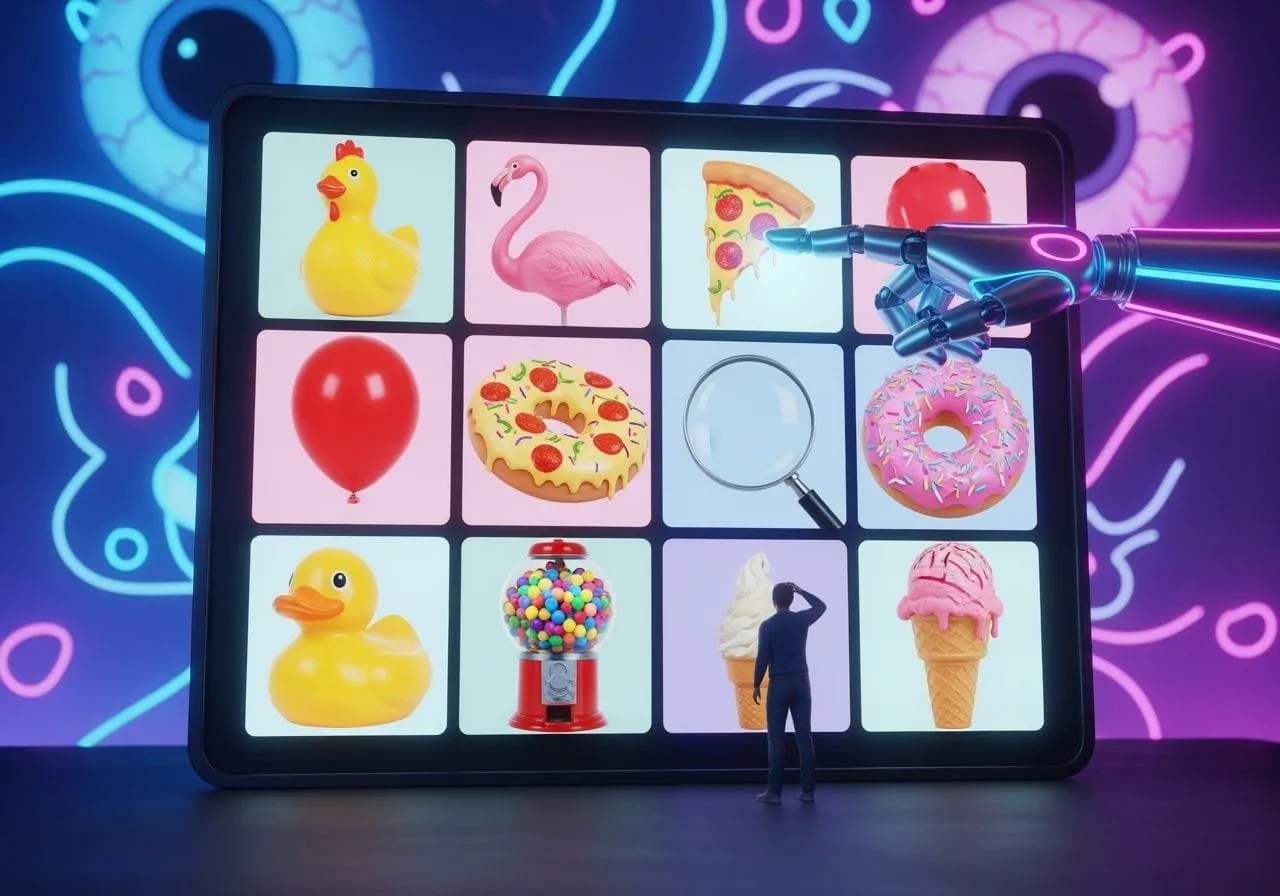“If you have to prove you’re human to read an article, the article isn’t the problem.”
CAPTCHAs used to feel like a cute handshake with the internet. “Pick the bicycles.” You squinted, did your civic duty, and got your content. Now it’s punishment by thumbnail—twelve blurry squares of traffic lights that might be leaves, and a timer ticking down like you’ve been asked to defuse a bomb at the DMV.
The Ritual
We still call it “proving you’re human,” which is hilarious. What CAPTCHAs actually prove is whether you’ll perform robot tasks on command. Congratulations: you passed the compliance test. Humanity optional.
CAPTCHAs don’t prove humanity; they measure compliance. Bots are passing. People are failing.
The arms race moved from “click the crosswalk” to “prove it with your device, your behavior, or your face.”
Better path: add humane friction and stake-based trust, not digital hazing rituals.
The Switch
Bots evolved. They don’t see low-res pictures; they see feature maps. They don’t hesitate; they classify. Meanwhile, you’re stabbing at pixels like a raccoon with a touchscreen. Accessibility got wrecked. Older devices? Good luck. Non-native readers? Enjoy parsing “select all images with a tram” on a continent where you’ve never seen one.
So the industry escalated. Image puzzles gave way to behavioral biometrics (how your mouse moves), browser attestation (prove your device is “trusted”), and liveness checks (stare at your camera and blink on command). We’ve gone from “find the bus” to “perform a small dance for the invisible bouncer.” The bouncer doesn’t laugh.
People Are Failing, Bots Are Cheating
Here’s the kicker: entire cottage industries exist to solve CAPTCHAs—humans in click farms or automated solvers sold as APIs. The test doesn’t stop bad actors; it outsources them. The only ones consistently blocked are regular users with old phones, privacy tools, or shaky hands. The more we “harden” the gate, the more we punish the very people the gate was supposed to protect.
The Imposter Problem
Who’s the real imposter—bots pretending to be people, or people trained to behave like bots? We’re nudged into machine-friendly rituals: hold still, click fast, don’t look confused. Fail the vibe check and you’re flagged. Pass it and you’re rewarded with… the privilege of viewing a web page that monetizes your attention.
The absurdity: platforms claim to fight automation by automating the user. You’re the anomaly now. An unpredictable human in a system that hates surprises.
The New Tests: Work, Wallet, or Face
When puzzles collapse, platforms pivot to three levers:
Work: make you do effort (puzzles, micro-tasks, “prove you read this”).
Wallet: anchor identity to payments, verified numbers, or costly accounts.
Face: escalate to ID scans and liveness checks because “security.”
Each lever has a cost. Work burns time. Wallet excludes the poor and the cautious. Face invites surveillance creep. None guarantee “human”—they guarantee traceability, which is not the same thing.
The Collateral Damage
CAPTCHAs are a tax on the vulnerable: the disabled user who can’t pass the twitch test, the traveler on hotel Wi-Fi flagged as “suspicious,” the privacy-minded person who won’t hand over a face scan to comment on a recipe. We call it safety; it’s really control. Meanwhile, the worst actors rout around it like water.
Better Than Hazing
You want fewer bots? Stop hazing your users at the door. Build stake-based, humane friction:
Intent over reflex. Let low-risk actions flow; add friction only when the action can cause harm (money, mass messaging, high-reach posts).
Time-delayed trust. New accounts can do small things instantly and big things after a cooling-off period. Real users stick. Spray-and-pray bots don’t.
Human-readable challenges. Ask for a single sentence in natural language that a model can’t trivially reuse verbatim (then rotate prompts). Don’t make grandma hunt for trams.
Community signals, not panopticons. Lightweight peer flags + transparent appeal routes beat black-box “you look suspicious” locks.
None of this is sexy. All of it respects humans without pretending the internet is a monastery.
The Tell
You can guess a site’s values by how it tests you. If the default is “prove yourself, peasant,” they’ve chosen the machine’s comfort over your dignity. If the default is “welcome; we’ll ask for more when it matters,” you’ve found a place that trusts humans enough to earn it back.
The Punchline
CAPTCHAs didn’t die; they just admitted what they always were: a vibes check dressed up as security. Bots will keep getting better at pretending to be us. The cure isn’t turning people into better bots. It’s designing systems where being human—messy, slow, surprising—isn’t treated like a bug.
Still think you’re in control?
AI isn’t magic. But understanding it feels like a superpower. Go deeper with our no-fluff guides and AI literacy tools.



